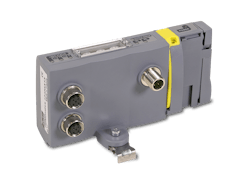As modern pneumatic components and systems get ever more complex, it becomes crucial to know what to look for and what is best suited for your applications. Choosing and maintaining components wisely, right through from compressors to workstations, can help avoid the expense of unplanned downtime and costly rebuilds. Conversely, a few wrong choices can lead to wasted energy and system failures. To avoid these pitfalls, here are some simple steps to take when looking to get more from your company’s all-important pneumatic components.
Preventive and Predictive Maintenance
Just as regular maintenance such as oil changes helps a vehicle remain operational and avoids more costly overhauls, pneumatic systems require regular upkeep to prevent more serious issues down the line. In compressed air systems, it is important to ensure lubricators are not left to run dry, filters are cleaned, and all contaminants—such as rust, metal shavings, water, and unwanted oils—are removed.
Predictive maintenance is about being proactive rather than reactive, to avoid component failures rather than be good at repairing them. It is often the task of sensors (available for almost every factory component) to alert you to potential problems. A flow sensor installed in-line with a filter regulator lubricator can identify blocked filters, and continuous-position sensors can show you the wear cylinders are exposed top over time.
Pneumatic components, such as Parker Hannifin’s H Series, H Micro, and Moduflex valves can be connected to an Industrial Ethernet network using the P2M Industrial Ethernet node from Parker Hannifin.
Compliance and Safety
Making sure a system complies with standards is also critical in helping to avoid costly downtime and equipment overhauls. The recently-updated standard, DIN ISO 8573-1, governs filtration levels. Defined down to the micrometer, it identifies the solids, water, and oil that should be separated out to maintain a well-functioning pneumatic system.
Similar to checking system compliance, carrying out risk assessments and consulting administrative bodies that serve those involved in workplace health and safety are important to help minimize risks of workplace injuries. Bringing in light curtains, interlocks, machine guarding, or safety exhaust products to block or prevent hazards can be helpful measures in this regard.
Specification and Integration
Right from the start of the specification process, selecting accurately sized equipment saves money and valuable energy. Going with oversized equipment wastes both money and energy. As alternatives to oversizing and waste, consider using pressure boosters that send flow from a compressor to the largest workpiece and pneumatic zoning on manifolds that can mix pressures. The simple step of locking regulators prevents workers from adjusting a system’s overall pressure to supply more air to individual workstations, which ultimately could damage a seal, waste energy, and even cause physical harm.
Updates in terms of the connectivity on the factory floor are worth considering as well. Low-cost Ethernet connections are more frequently replacing hardwired solutions and associated trunks of cables to provide network-based connectivity across a facility. IO-Link connectivity to run field-level devices back to the IO-Link master provides further opportunities for savings in time, wiring, component cost, and avoiding troubleshooting. Additionally, many advanced network nodes supply prognostic data for predictive maintenance and built-in sensors to check for shorts, overcurrent, cycle counting, and thermal management, among other things.
Linda Caron is global product manager for factory automation, Parker Hannifin Pneumatic Div., Motion Systems Group in Richland, Mich. For more information, call 877-321-4736 or visit parker.com/pneumatics.


